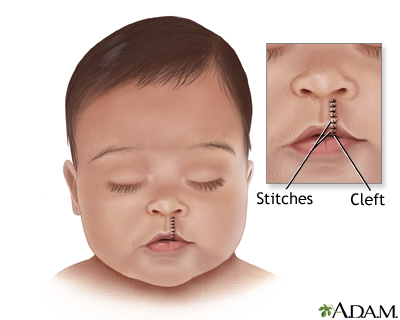
Overview
While the baby is anesthetized and asleep (general anesthesia), the tissues around the defect are trimmed and sewn together with several layers of stitches (absorbable sutures). The skin is sewn together with very small, fine stitches (sutures) to make the scar as small as possible. In cleft palate repair, tissue from the back of the mouth (pharynx) may be taken to add tissue to the deficient soft palate (this is called a pharyngeal flap). Occasionally, more than one surgery is required for complete palate closure.
Review Date 5/6/2025
Updated by: Tang Ho, MD, Associate Professor, Division of Facial Plastic and Reconstructive Surgery, Department of Otolaryngology – Head and Neck Surgery, The University of Texas Medical School at Houston, Houston, TX. Also reviewed by David C. Dugdale, MD, Medical Director, Brenda Conaway, Editorial Director, and the A.D.A.M. Editorial team.


